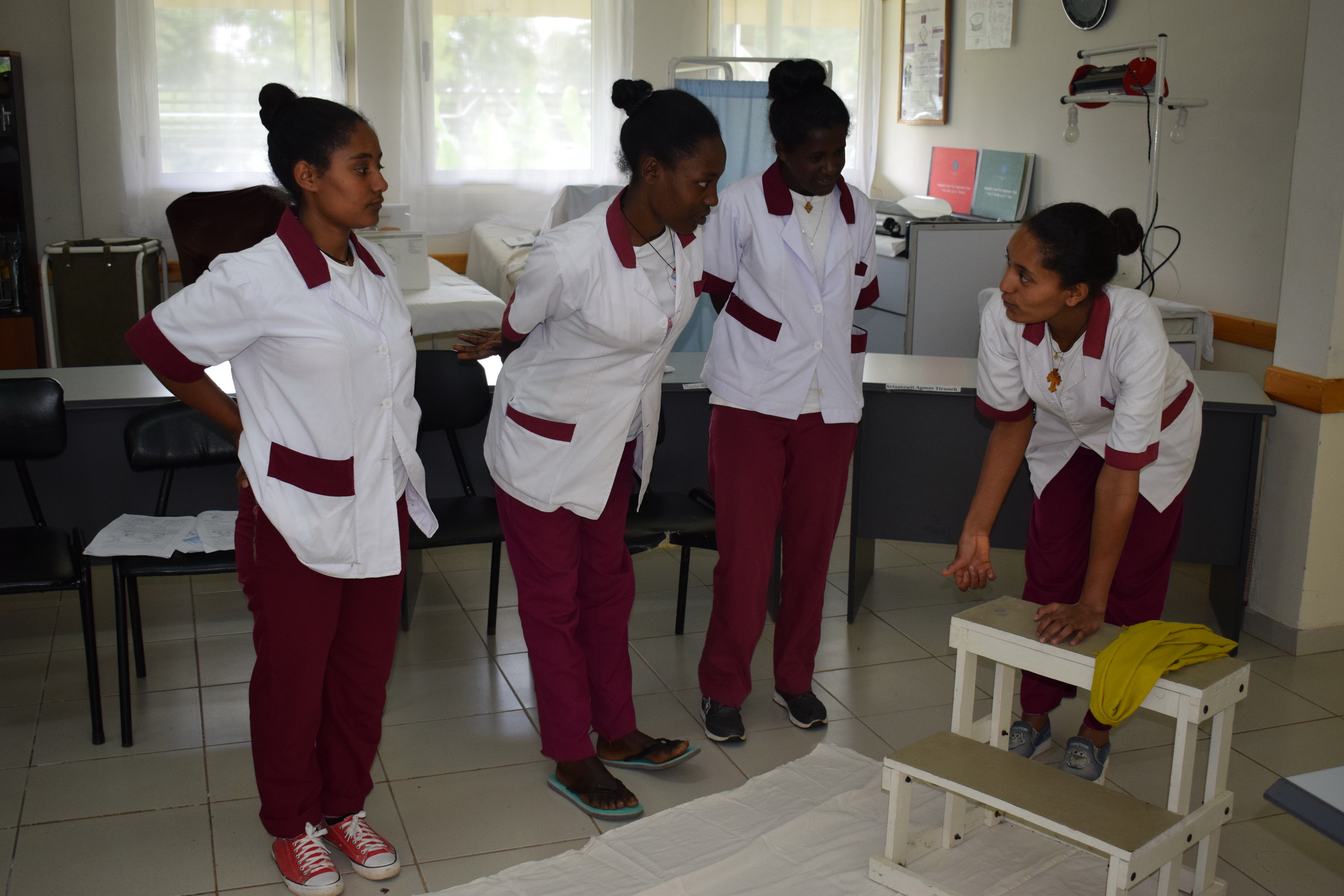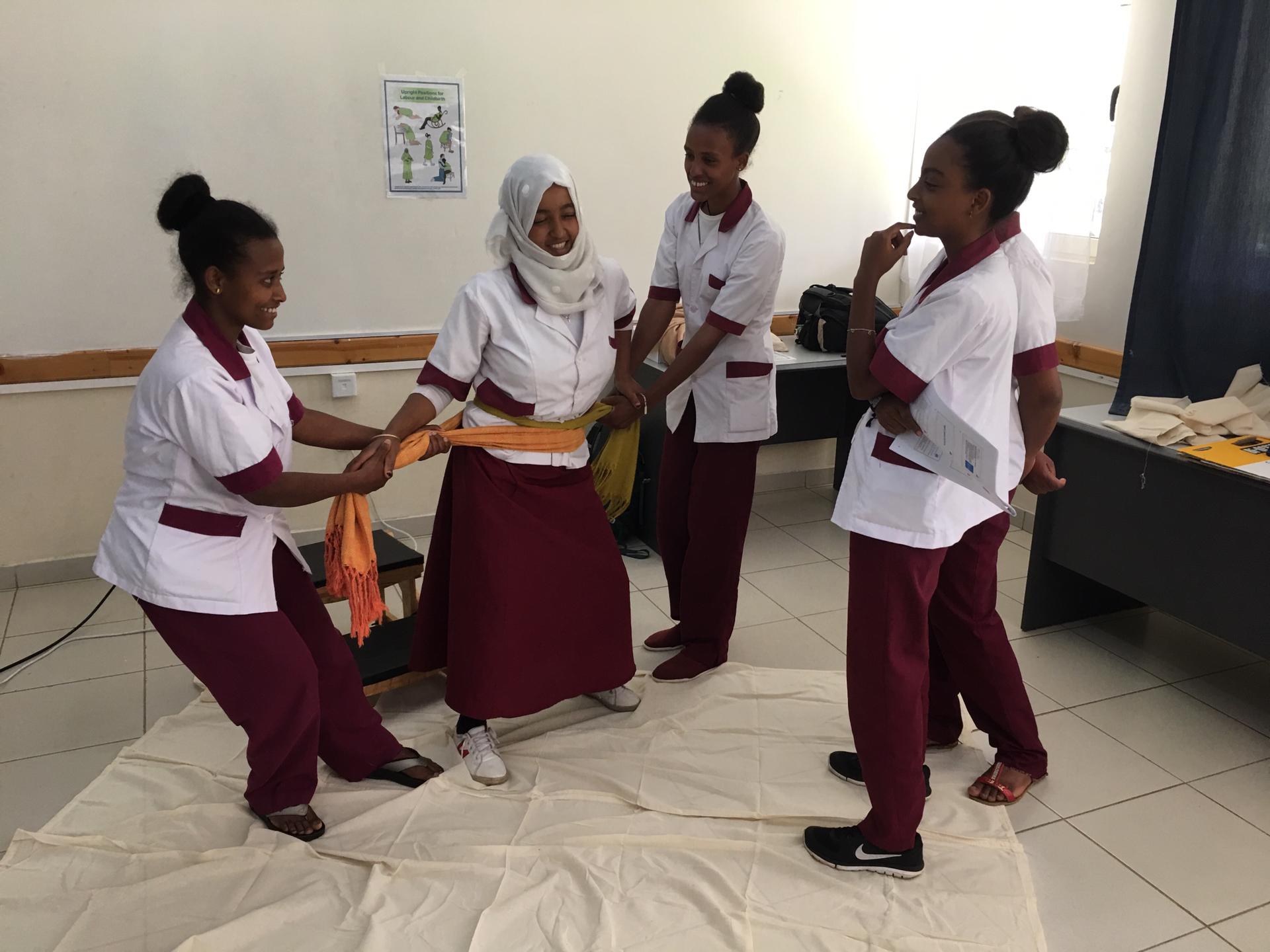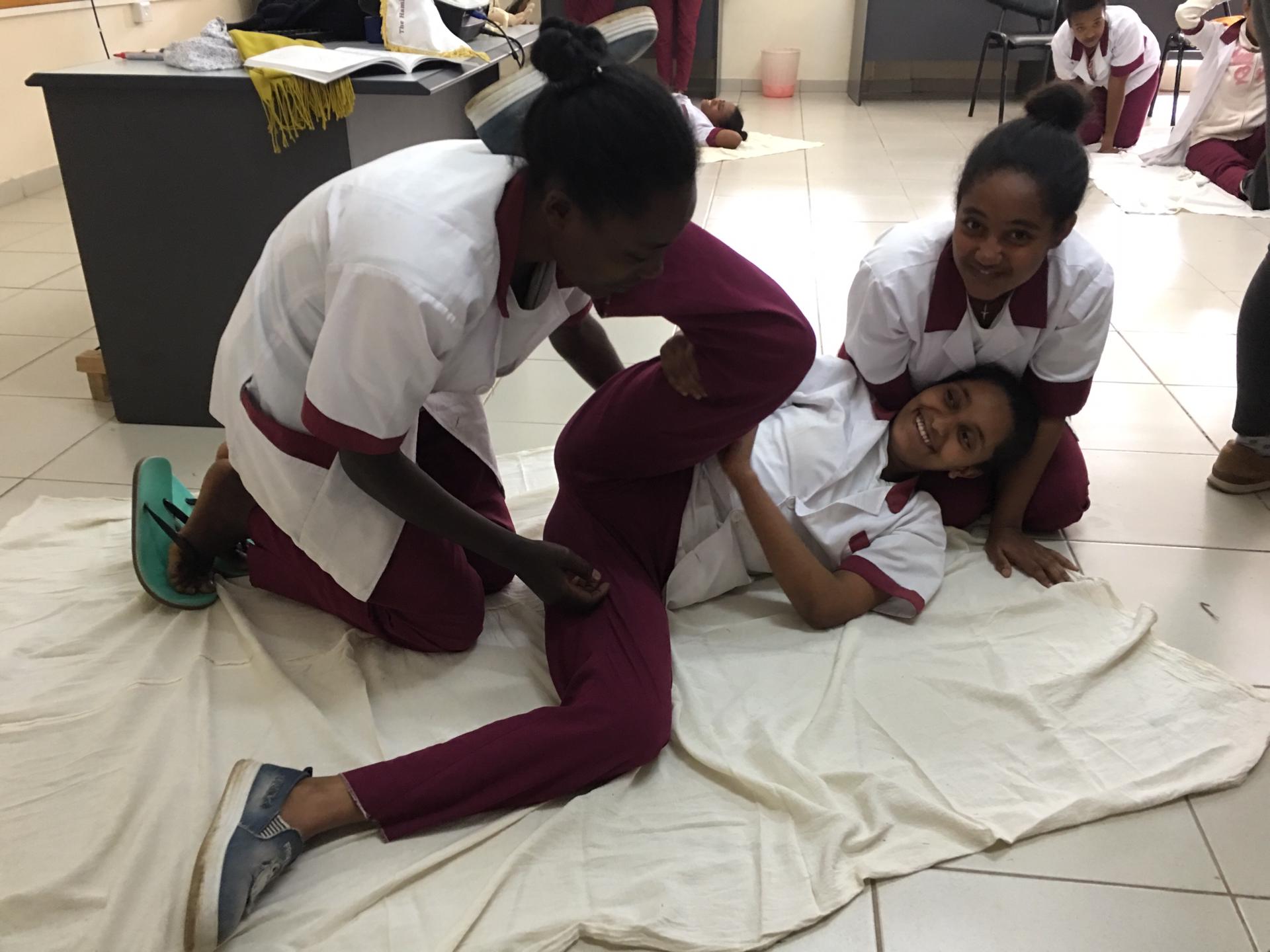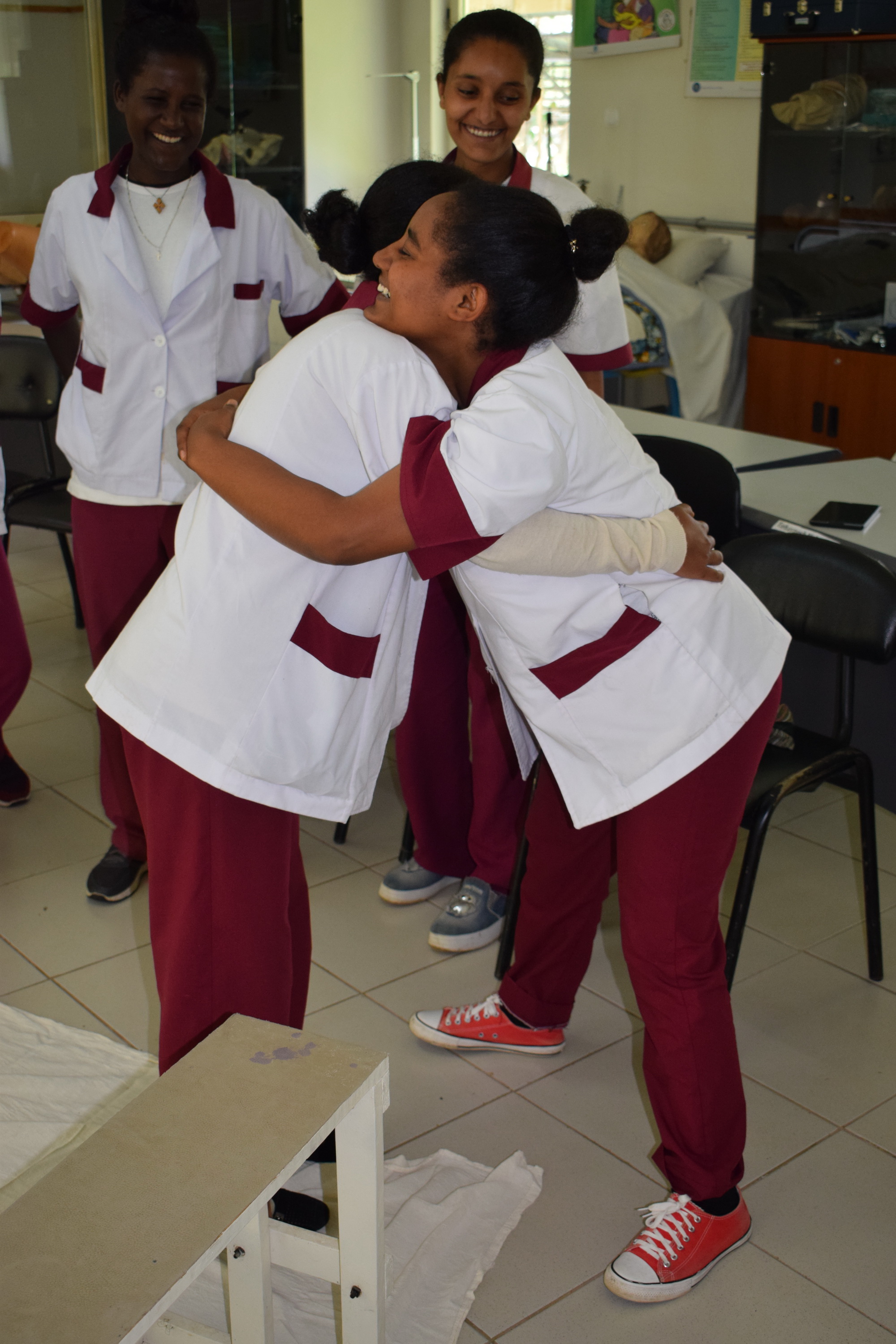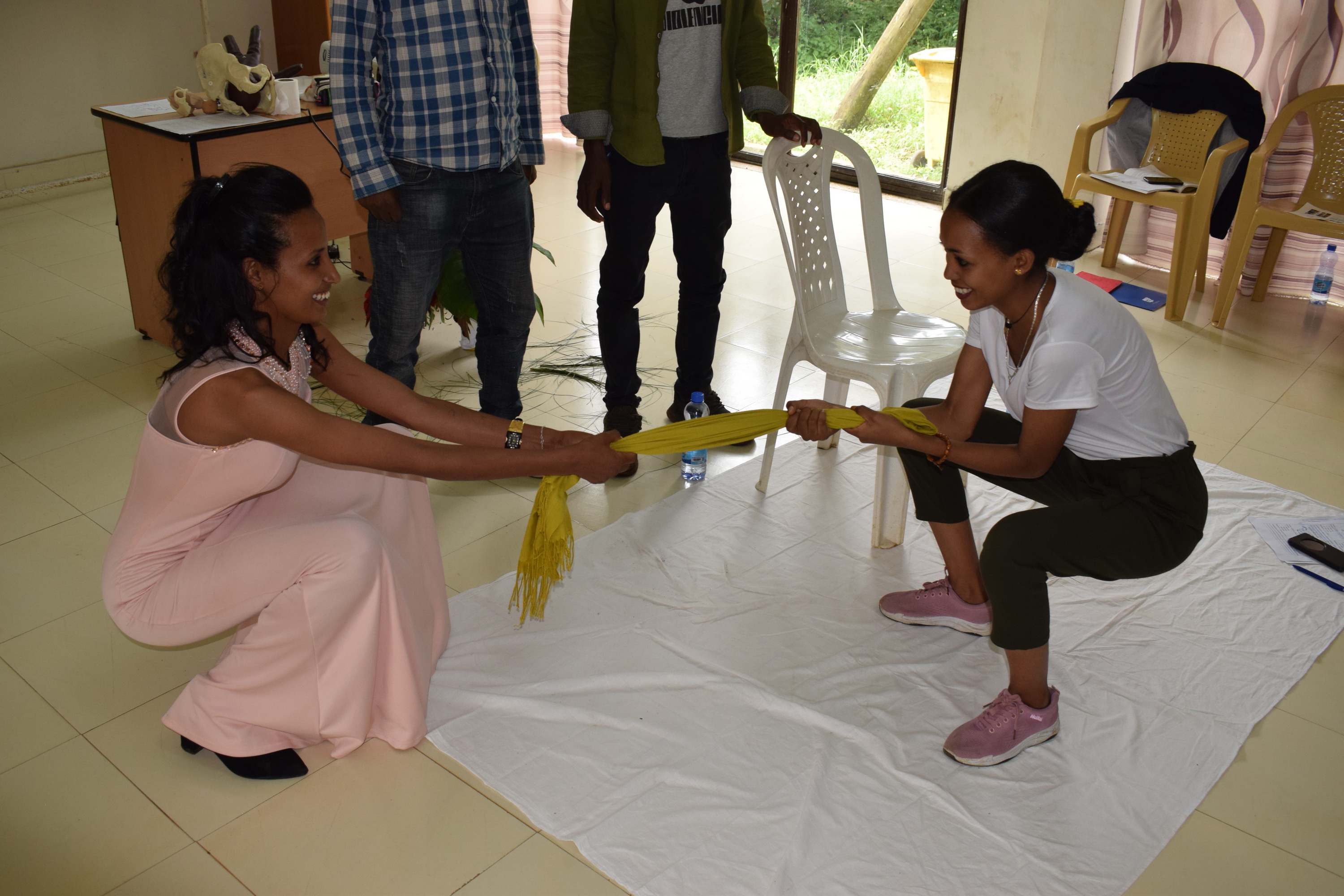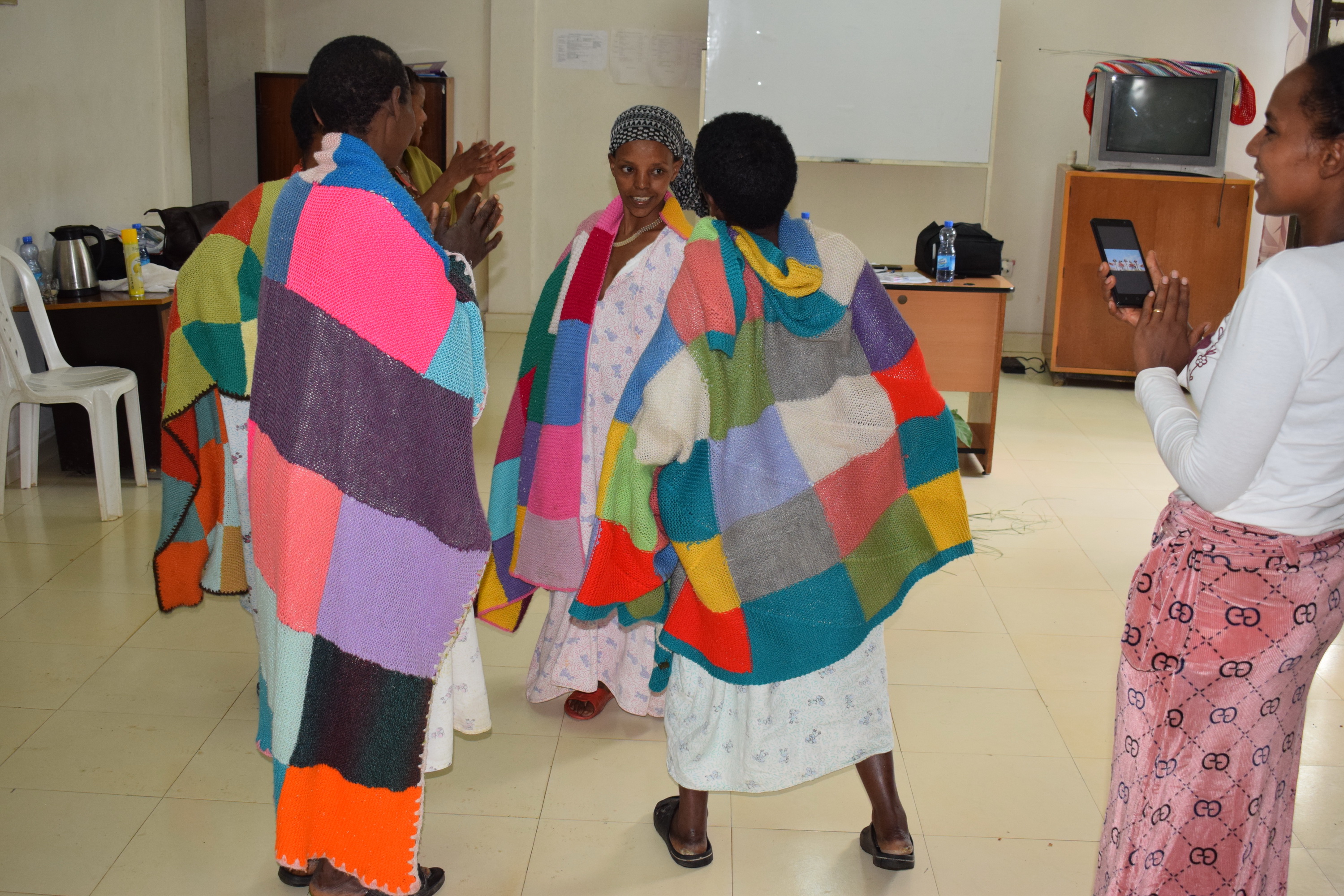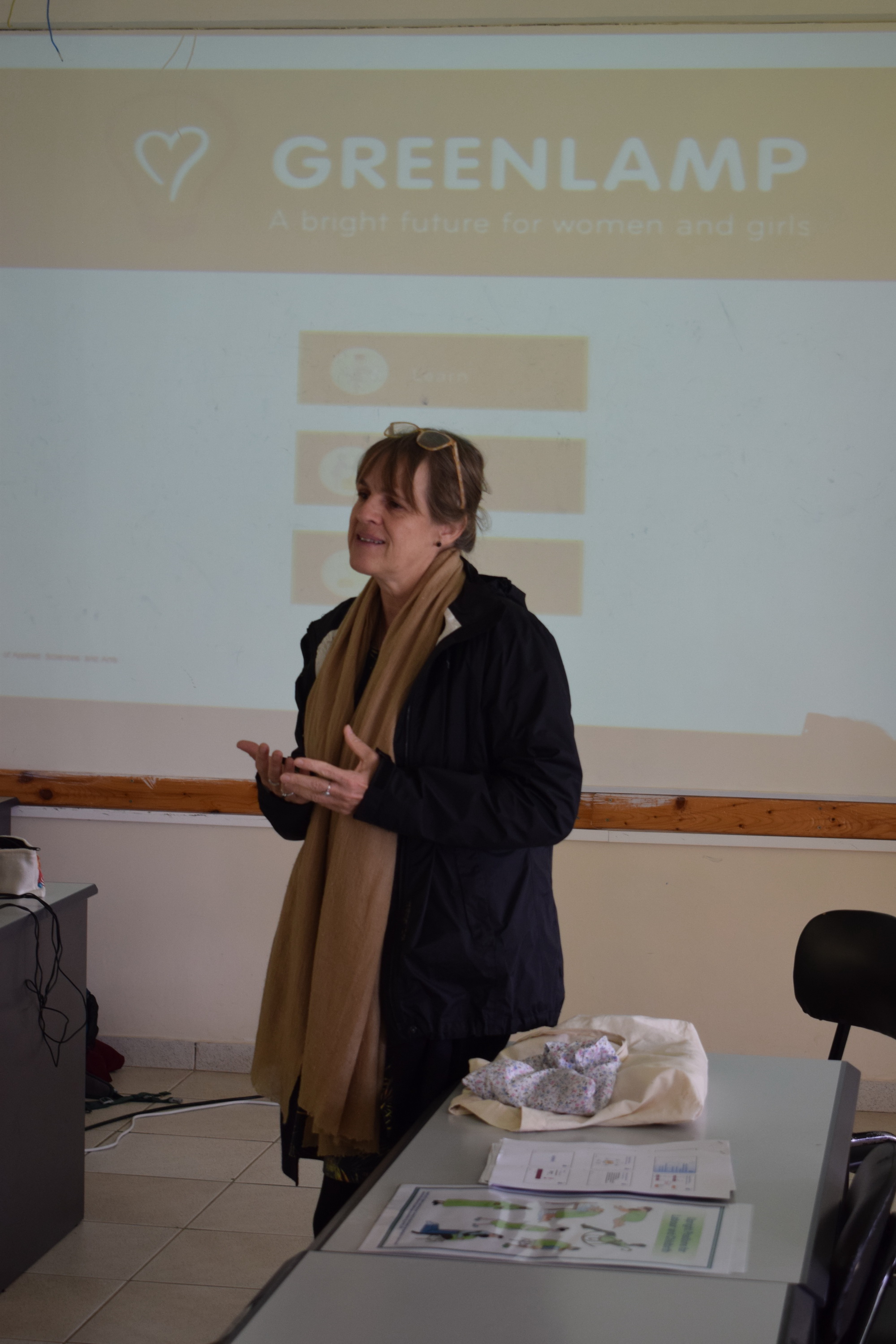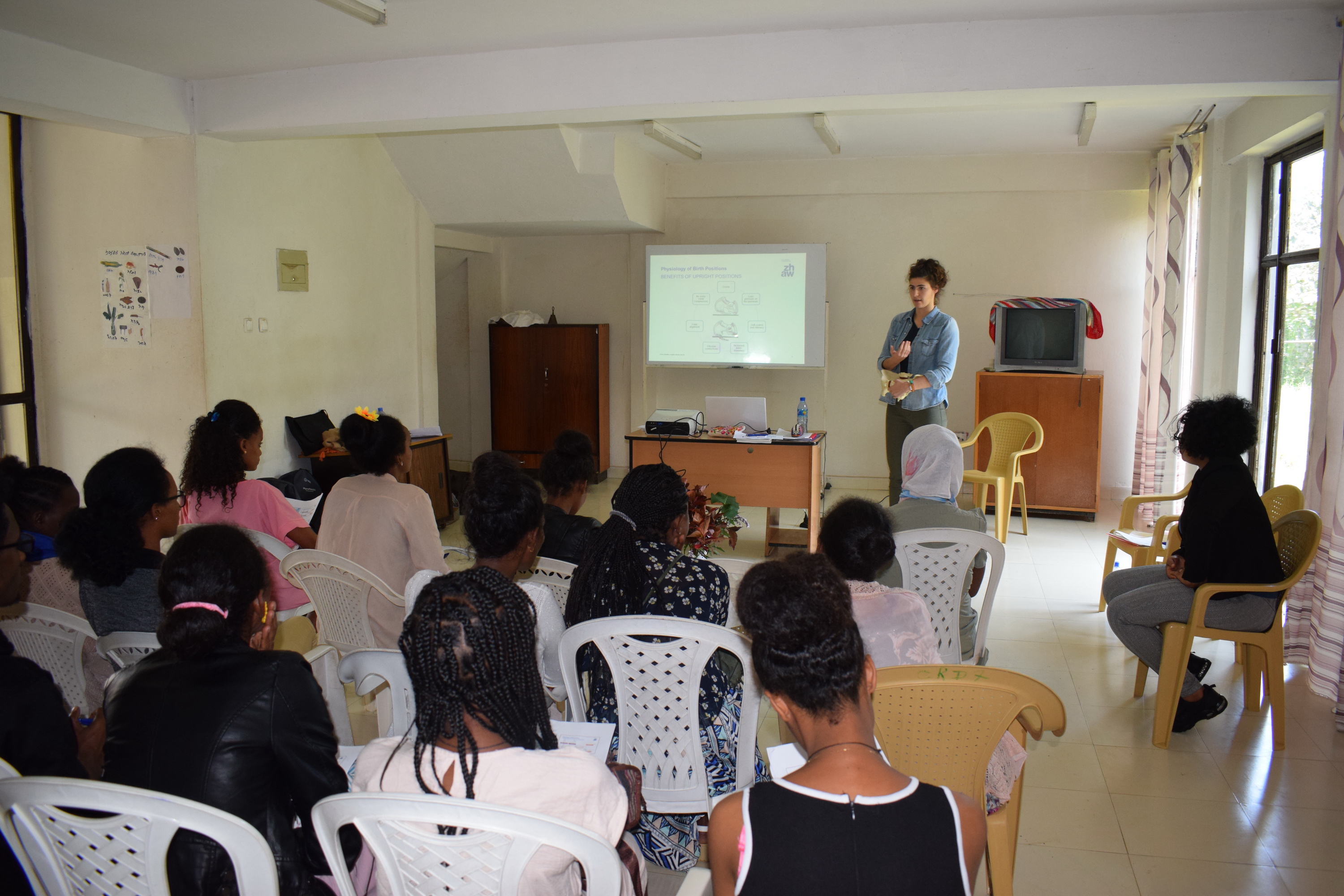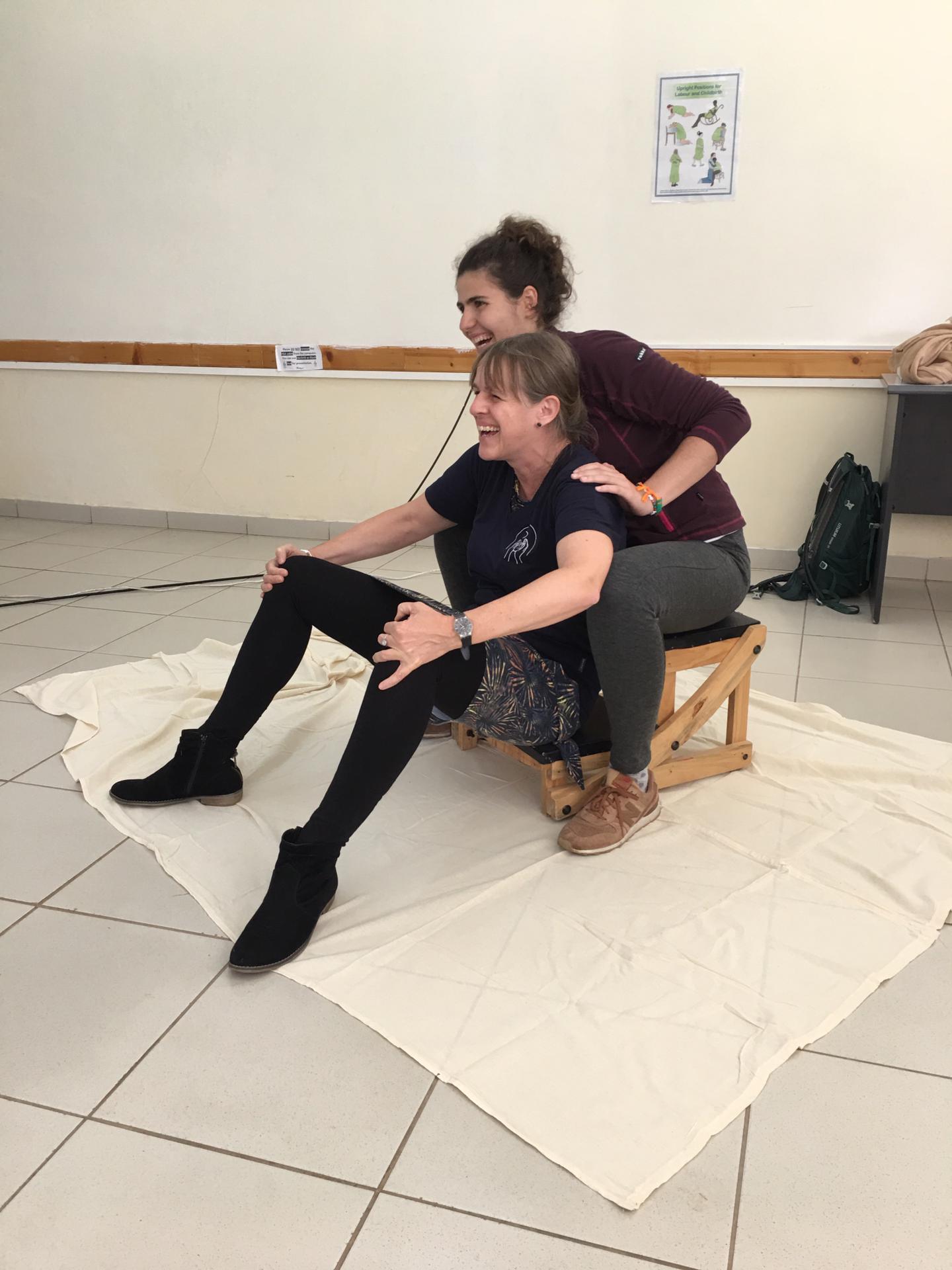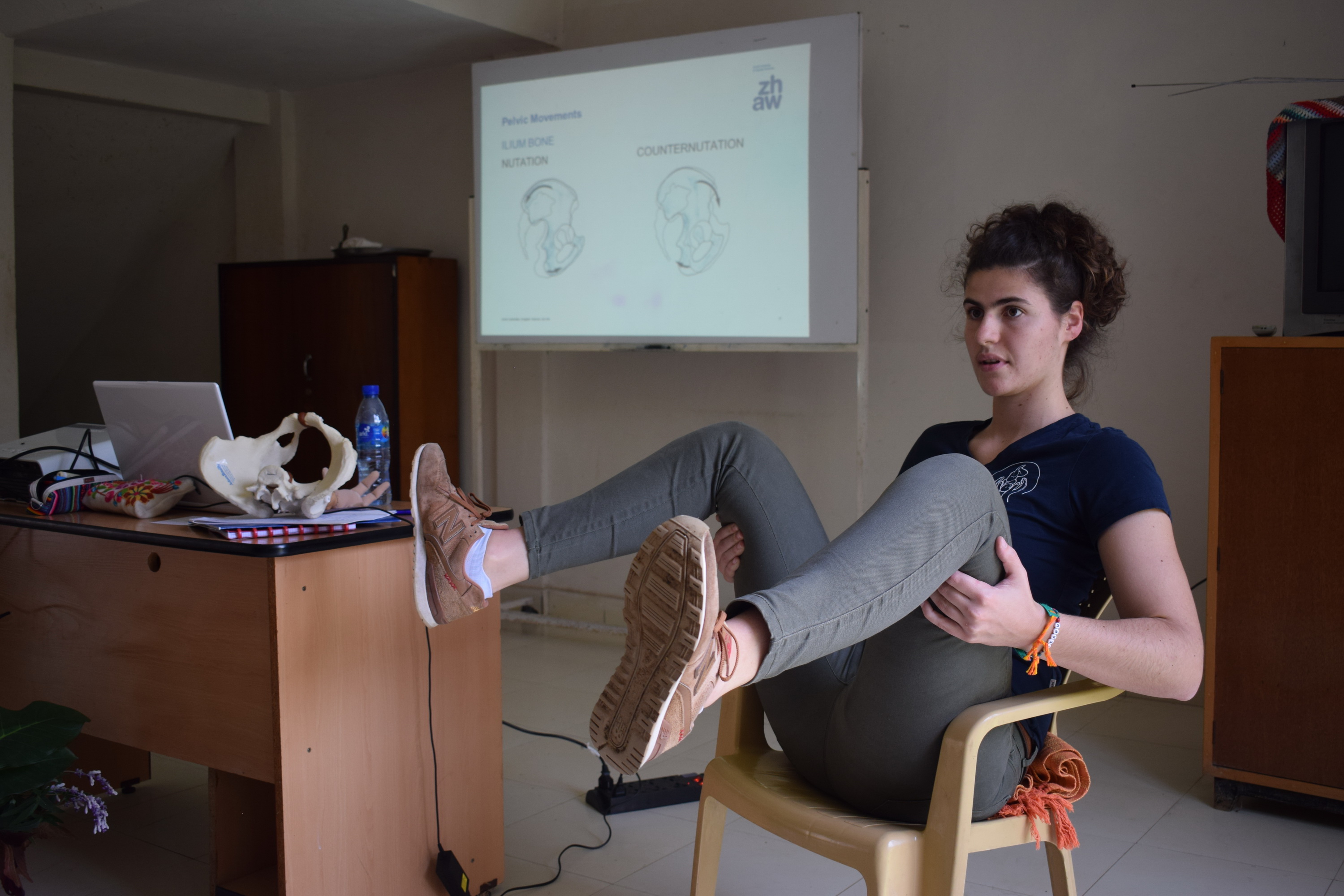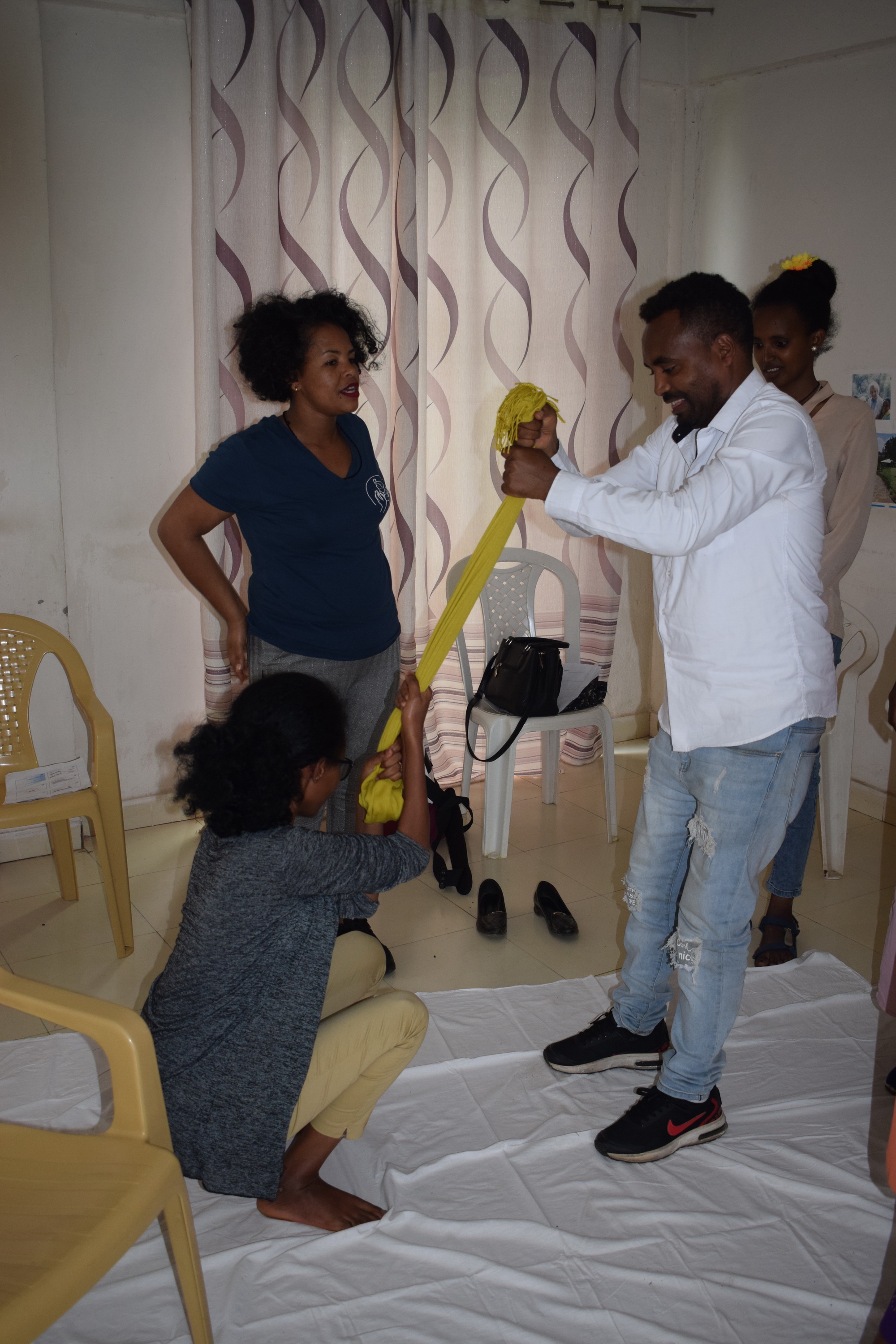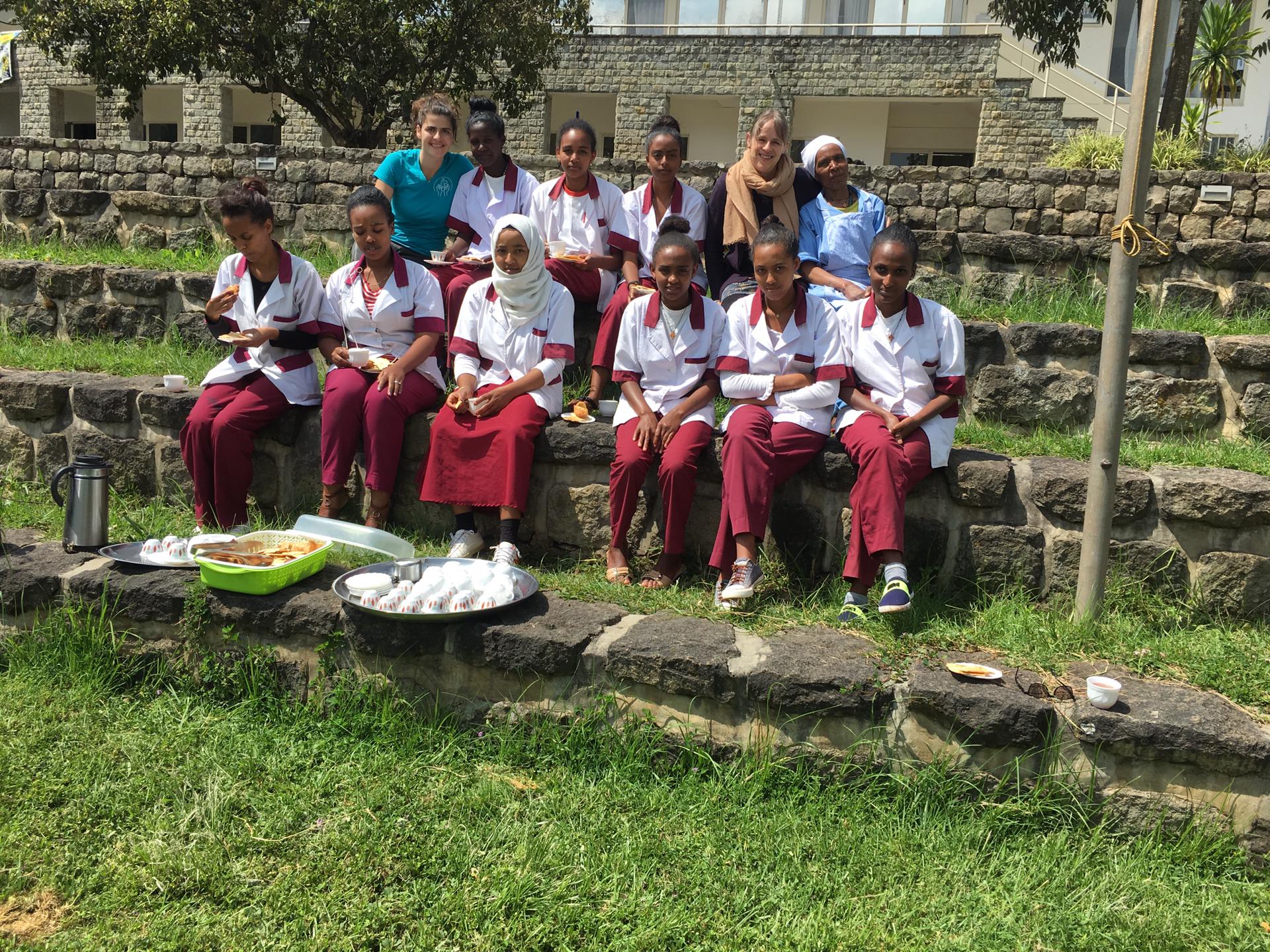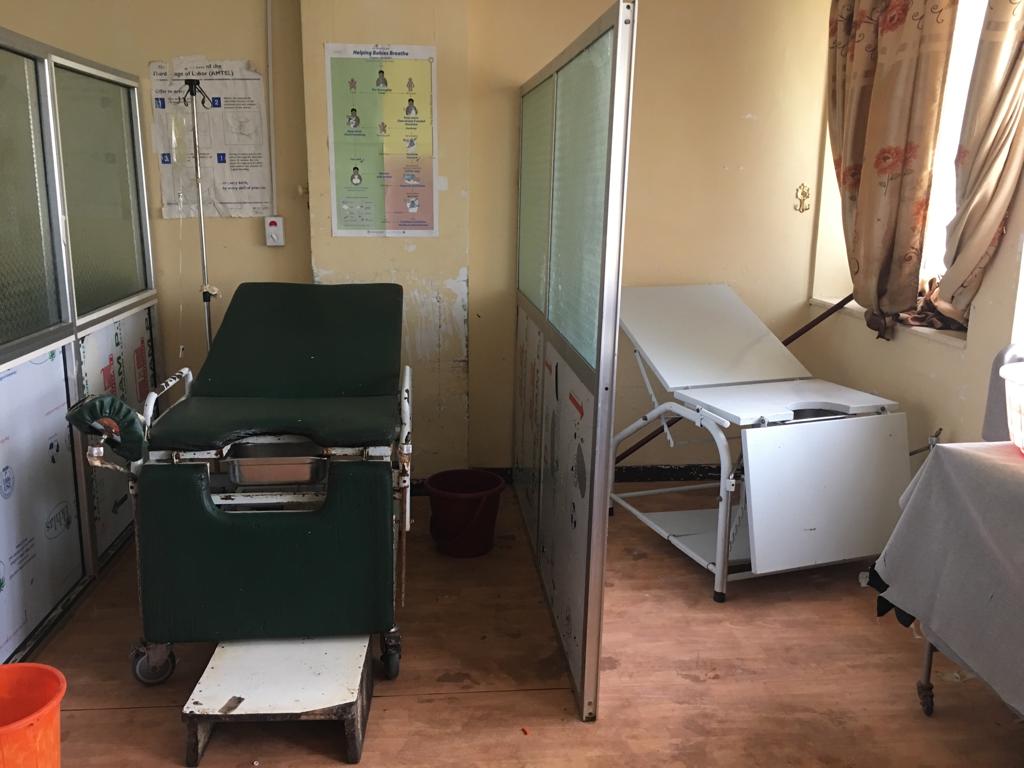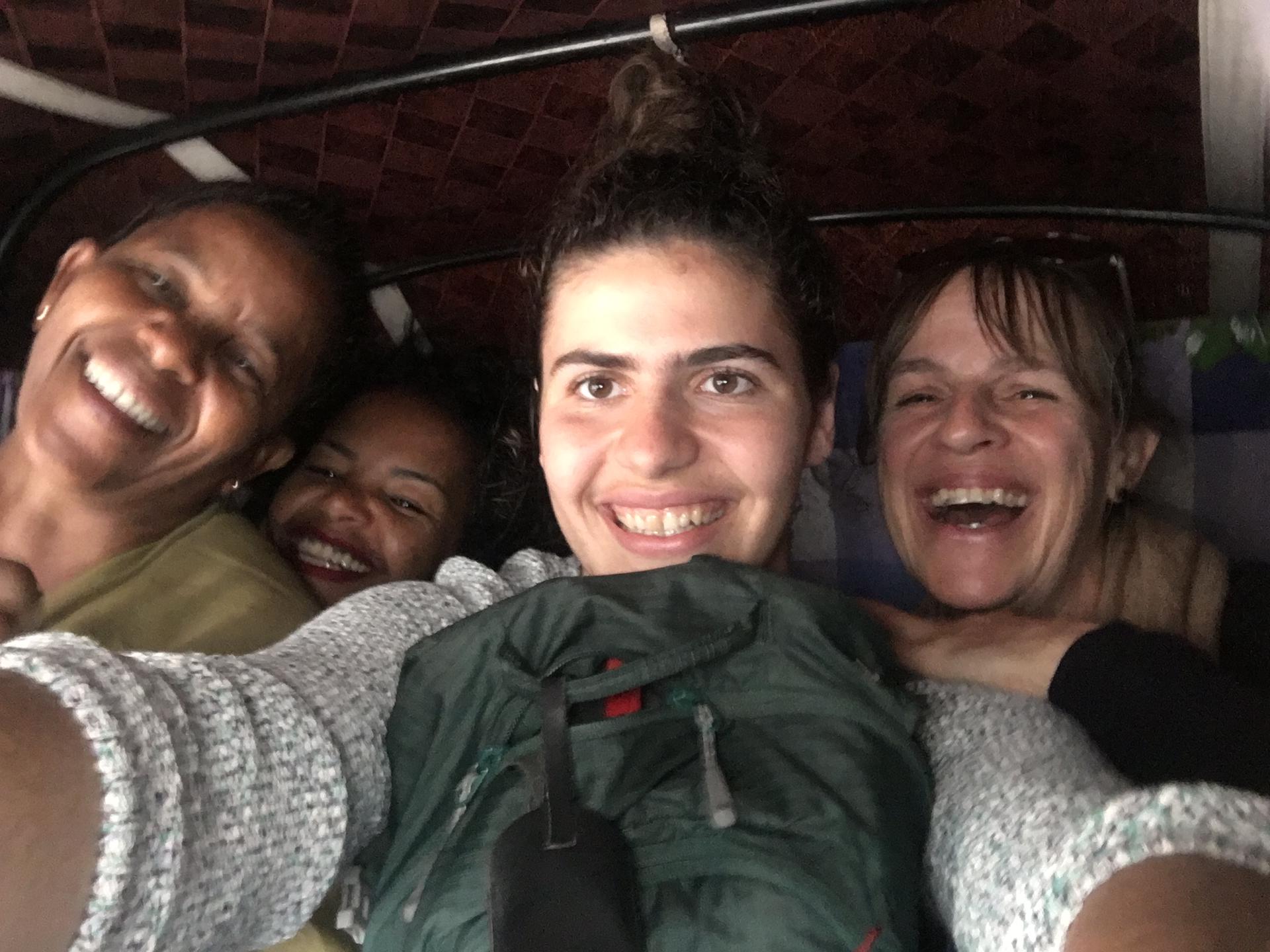
After last year’s successful trip to Ethiopia to teach midwives and midwifery students the use and benefits of upright birthing positions at the Hamlin College for Midwives (HCM), MSc in Midwifery and ZHAW senior lecturer Denise Eigenmann and recently graduated midwife Vera Maria Probst were enthusiastic to continue giving these workshops in September this year. The trip was the third as part of a GreenLamp co-ordinated teacher exchange program with the University of Applied Sciences (ZHAW) in Zurich and HCM in Addis Ababa. Here Vera Maria gives us a personal glimpse into their most recent trip:
“On 14 September 2019 – exactly four years to the day after my first day at the Midwifery Institute of the Zurich University of Applied Sciences (ZHAW) – instead of sitting in a lecture hall I was sitting in an airplane to Addis Ababa, Ethiopia. I was full of anticipation and ready to get on with the workshops about upright birthing positions – a topic that I am so passionate about. On the one hand, mobility and the use of different birthing positions during labour have various positive physiological effects on the birth process and therefore reduces the number of risks and interventions (e.g. episiotomies, ventouse-deliveries). On the other hand, the labouring mother feels empowered in her decision-making, which results in a more positive childbirth experience.
Denise and I decided to train midwives from different rural health centres from another region this year, so we first travelled over the Abyssinian highlands to Bahir Dar. Accompanied and supported by Sister Abrehet, Hamlin College of Midwives lecturer, and Sister Hirut, from the Hamlin Fistula Hospital in Bahir Dar, we gave two workshops for midwives of the Amhara region. The four of us quickly became a well-functioning Ethiopian-Swiss team and enjoyed this collaboration very much. Back in the capital, another two workshops were held for the 2nd year Hamlin students and some midwives from Addis Abeba.
The workshops lasted one day and included the history, physiology, advantages and disadvantages of different birthing positions, as well as the pelvic movements. In the afternoon the participants had time to try out the different birthing positions and discuss them critically. While the participants seemed rather reserved and shy during the theoretical morning session, in the afternoon there was a lively exchange. The practical part was very much appreciated by the midwives and there was a lot of laughter – especially by the male midwives who enjoyed acting like a labouring woman and simulating births. It was very encouraging to see how attentive and participative the midwives were.
After we finished the second workshop, something very special happened. Sister Hirut asked us to introduce a Swiss dance and to learn a dance from the Ethiopians. During the Ethiopian dance, which was only accompanied by a clapping rhythm, fistula patients of the Hamlin Fistula Hospital came to the glass door and enjoyed watching our dance. We opened the door for them and they started dancing with us – something extraordinary for these women, some of whom lived isolated for years and have now received a second life through a fistula surgery. I will never forget the joy that I saw in their faces.
Another successful trip has ended and our vision remains the same. We want to give Ethiopian women the opportunity to have the freedom of choosing their position during labour and childbirth, by training midwives and students about the use and benefits of different birthing positions.”
